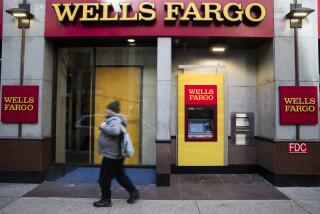Funds’ Early Gains Payout Could Be Investor Surprise
- Share via
Mutual funds are gearing up to make their capital gains payments to shareholders, an annual rite that often leaves many fund investors with an unpleasant tax surprise.
But this year, the worst surprise may be that you’ve already been surprised--by an earlier-than-usual fund gains payment.
Through Oct. 17, 69 funds had made capital gains distributions worth 10% or more of their share value, versus an average of 41 funds that had made such payments in the same period over the last three years, according to Chicago-based research firm Morningstar Inc.
That may mean shareholders who wanted to take certain steps to minimize the tax burden from their funds may be too late.
Fund companies, which are required by law to pass their net realized capital gains each year through to shareholders, say making gains payments earlier--rather than in November and December, as is traditional--can help investors get a jump on tax planning.
But Morningstar’s chief equity fund analyst, Russel Kinnel, says this “annoying new trend” is really for the benefit of the fund companies’ sales forces at the expense of current shareholders: Because investors late in the year often are cautioned to wait to buy a fund after it makes its annual gains payment, a fund that can say it has already made the payment may be able to attract more new investors in the fourth quarter.
“I can sort of understand the fund companies’ dilemma: They don’t want to discourage new shareholders. But they are supposed to be representing their existing customers, not nonexistent ones,” said Kinnel.
What’s more, as stocks slid hard this fall, funds that made early distributions may have missed a golden opportunity to offset already-realized gains with losses, and shield their investors from large gains payments, Kinnel noted.
Most of the funds that have made distributions worth 15% or more of their share values have gone on to fall sharply since the payout, he said.
Kinnel suggests that fund companies should post monthly capital gains distributions estimates on their Web sites so that potential investors will know what they are getting into--and so that current shareholders won’t get hit with unnecessary taxable events.
Some companies, such as Vanguard Group and Fidelity Investments, have posted rough estimates this fall.
Some of this year’s early surprises were dramatic. Warburg Pincus Advisor Japan Small Company and Japan Growth funds paid short-term gains totaling 56% and 22% of their share values, respectively, in August. The funds, which rocketed 330% and 260%, respectively, last year, have plunged this year with Japanese tech stocks.
Customer redemptions only fuel the cycle of distribution pain in funds such as these.
Though the size of the Warburg small-company fund’s payout was extreme, the reversal of fortune is far from unique. Other funds that have paid out big distributions include Gintel, a mid-cap fund, and First American International, a foreign stock fund. Both are down by more than 25% so far this year after soaring more than 80% last year, and both paid distributions worth more than 25% of share value, according to Morningstar.
Weitz Hickory, a small-cap value fund with a strong long-term record, paid a 16% distribution earlier this year. Through last week, Hickory was down 21.5% in 2000 after gaining 36.7% last year.
Warburg said it decided to pay out the short-term gains in August rather than wait until December to give customers time to try to figure out how to offset some of the hit. But fund customers may need to keep planning: Long-term capital gains distributions may be coming in December as well, Warburg warned at the time.
More to Read
Inside the business of entertainment
The Wide Shot brings you news, analysis and insights on everything from streaming wars to production — and what it all means for the future.
You may occasionally receive promotional content from the Los Angeles Times.









